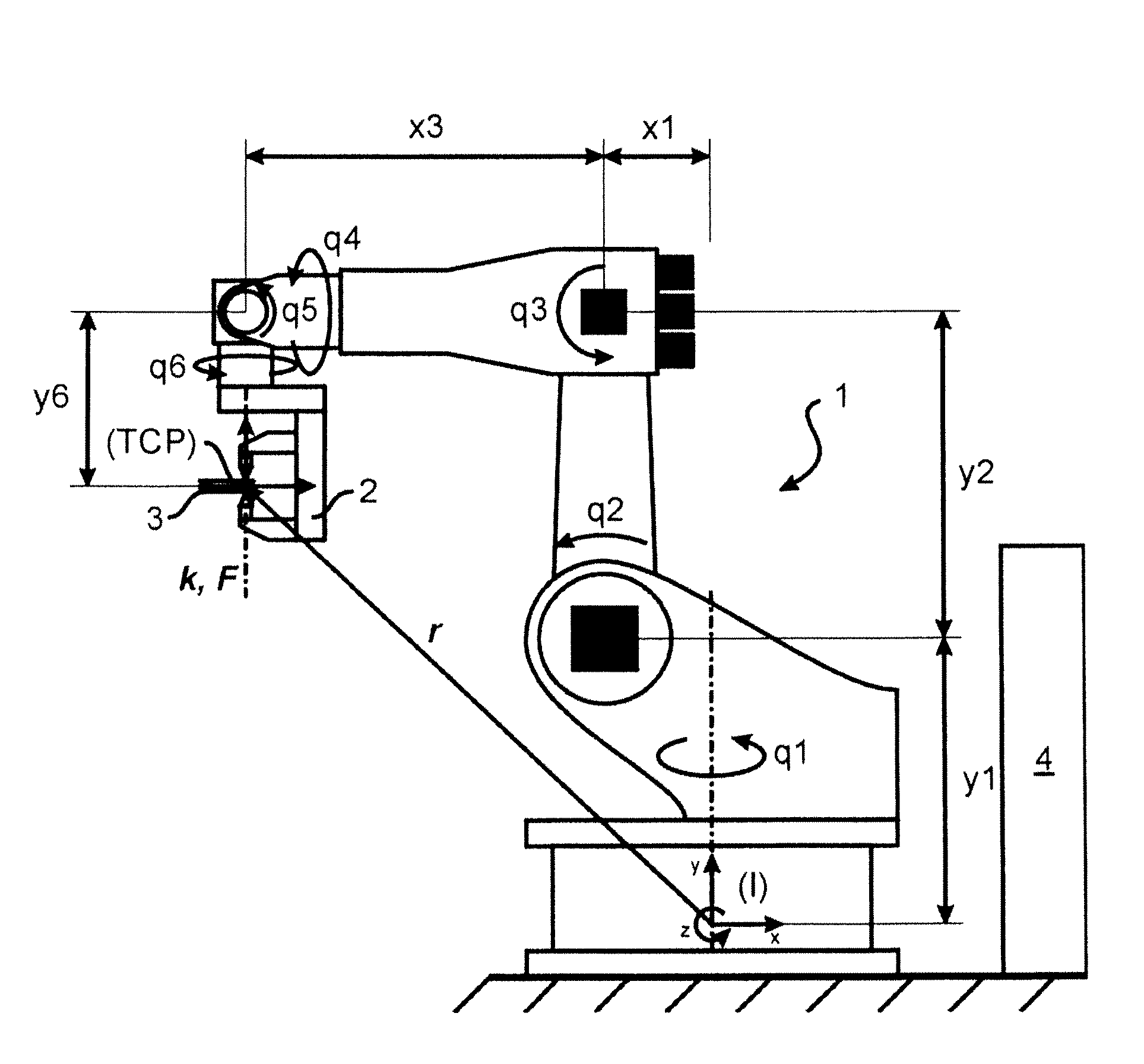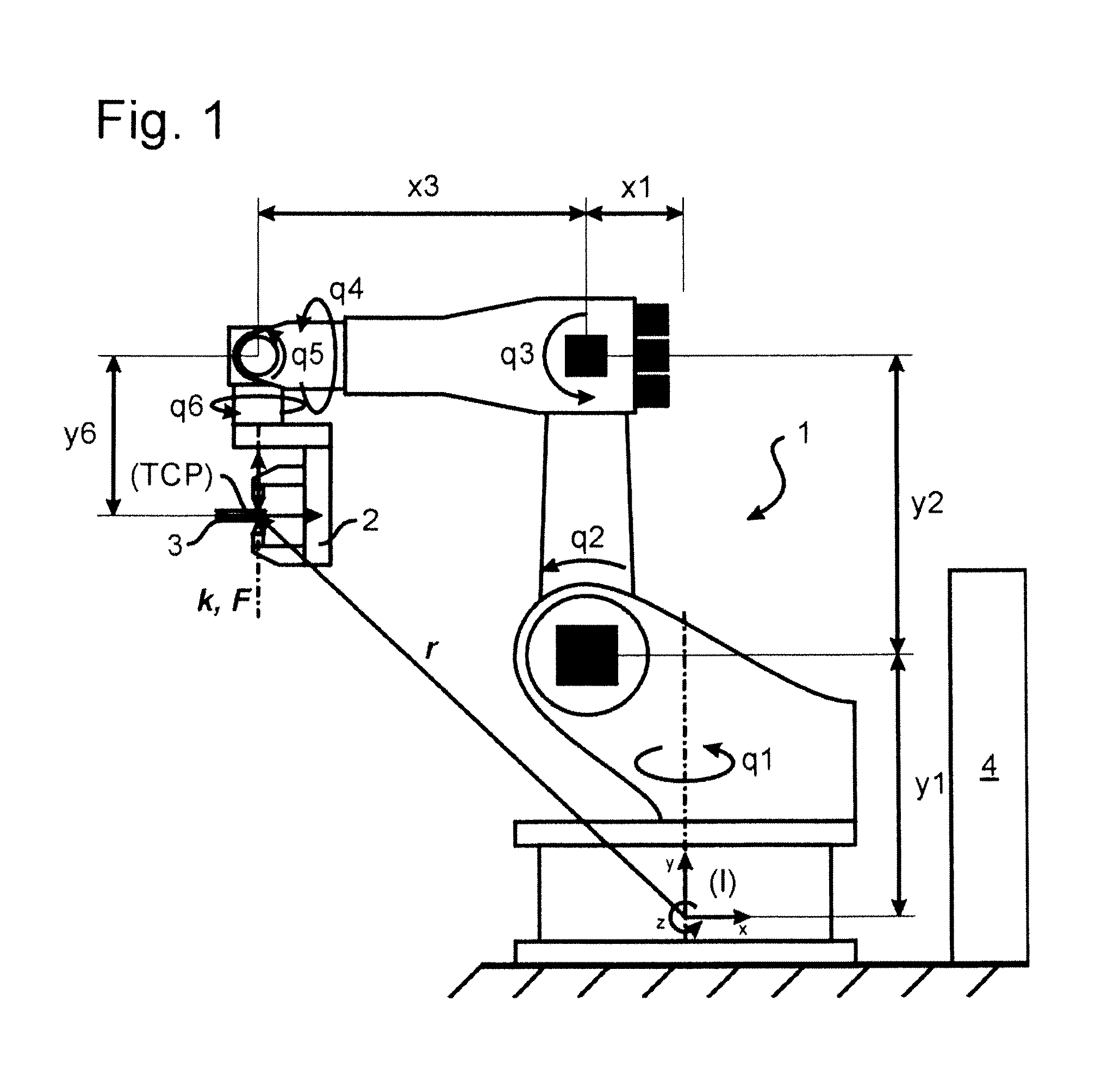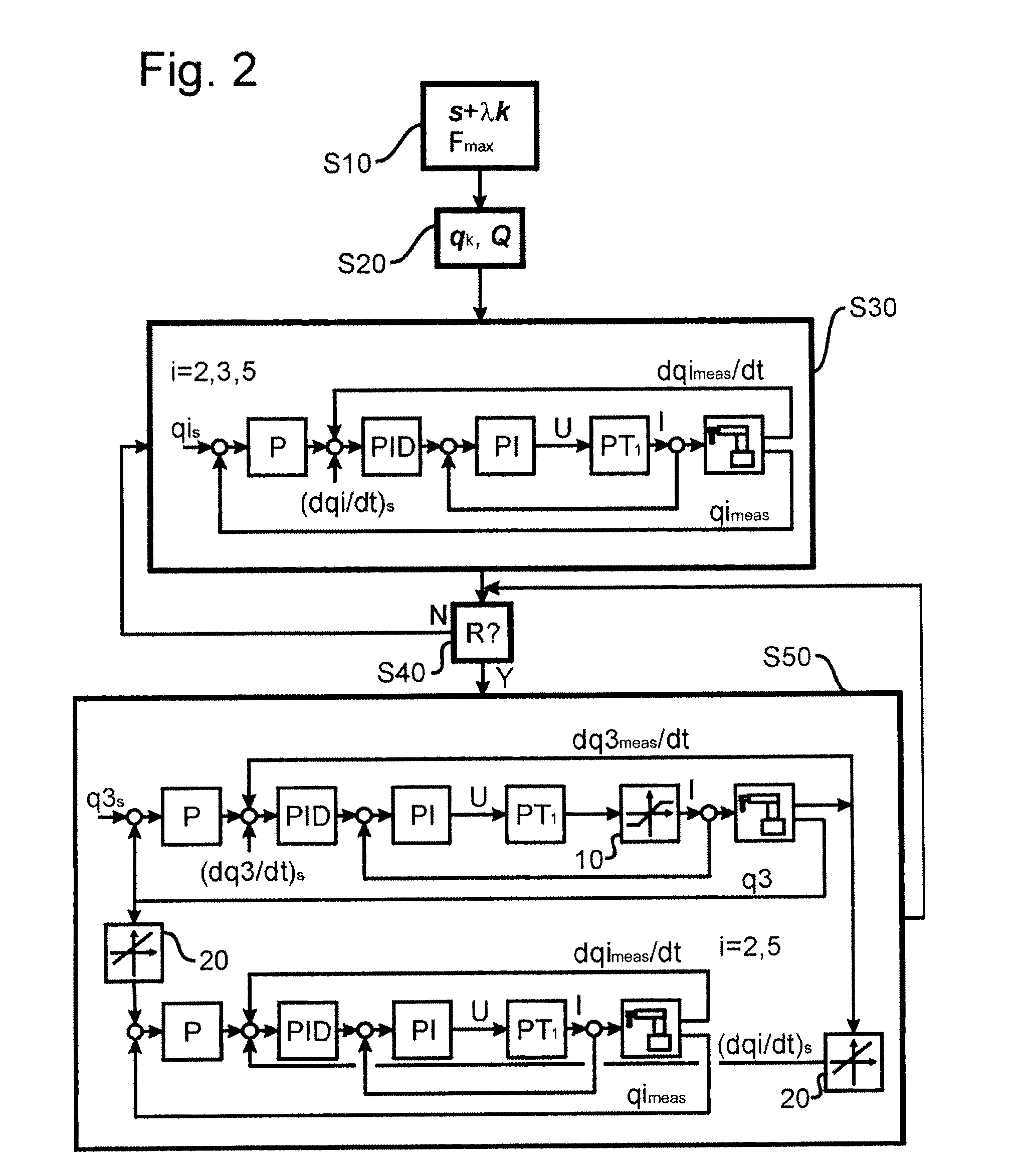Method and device to regulate an automated manipulator
a multi-axis, manipulator technology, applied in the direction of programmed manipulators, welding monitoring devices, welding electric supplies, etc., can solve the problems of reducing the quality of the welding spot to the point of failure, damage to the module and one of the electrodes, and affecting the response of automated manipulators, so as to improve the response of the manipulator
- Summary
- Abstract
- Description
- Claims
- Application Information
AI Technical Summary
Benefits of technology
Problems solved by technology
Method used
Image
Examples
Embodiment Construction
[0031]FIG. 1 shows a six-axis articulated arm robot 1 in a base position in which its six axes or, respectively, joint angles q1, q2, . . . , q6 exhibit a value of zero. For simplification it is assumed that no movement occurs in the axes 1, 4 and 6, such that only a planar movement and the joint coordinates q2, q3 and q5 are considered in the following that define the corresponding rotation positions of the actuation motors via the respective gearing conversions. In the fixed-base inertial system I, the vector x of the tool reference system TCP of an electrode holder 2 that should spot-weld two plates 3 with the axis intervals x1, . . . , y6 drawn in FIG. 1 then reads:
x=x(q)=[rxryϕ]=[-x1-y2·sin(q2)-x3·cos(q2+q3)+y6·sin(q2+q3+q5)y1+y2·cos(q2)-x3·sin(q2+q3)-y6·cos(q2+q3+q5)q2+q3+q5](1)
with the components rx, ry of the spatial vector r relative to the TCP and the EULER angle φ around the z-axis. In the base pose shown in FIG. 1, the Jacobian matrix locally reads:
J(q=0)=∂x∂qq=0=[-y2+y6...
PUM
 Login to View More
Login to View More Abstract
Description
Claims
Application Information
 Login to View More
Login to View More - R&D
- Intellectual Property
- Life Sciences
- Materials
- Tech Scout
- Unparalleled Data Quality
- Higher Quality Content
- 60% Fewer Hallucinations
Browse by: Latest US Patents, China's latest patents, Technical Efficacy Thesaurus, Application Domain, Technology Topic, Popular Technical Reports.
© 2025 PatSnap. All rights reserved.Legal|Privacy policy|Modern Slavery Act Transparency Statement|Sitemap|About US| Contact US: help@patsnap.com



